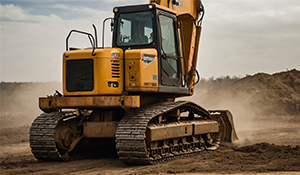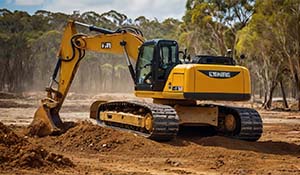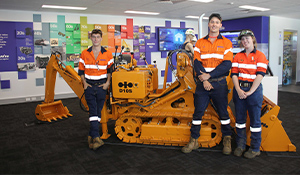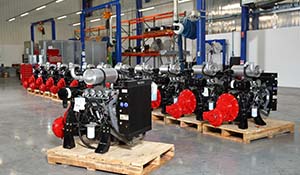FEATURE - The Benefits of Buying Used Equipment
There’s plenty to think about when purchasing new equipment for construction and civil engineering projects, but one of the earliest considerations to make after budget and financing, as well as the type of equipment needed for the job, is whether to go new or second-hand. Both have their pros and cons, but used plant and equipment can outshine new equivalents in several areas.

Just because a grader, dozer, tractor or portable generator is used, doesn’t mean it’s used up. Yes, there will be wear and tear on second-hand equipment, but constant improvements in machinery construction means older vehicles are lasting longer than ever and many are still at work on job sites all over the country.
Nowadays, with pressures on business budgets coming from all directions, the savings to be had by choosing second-hand equipment makes it an increasingly attractive option, with the positives outweighing the negatives for many buyers.
Here are some of the key positives with buying used equipment

1. Price
Using a skid steer as an example, a used machine of the same make, model and type as a new unit will almost always be cheaper. This is the most obvious benefit when buying used over new and applies to most types of construction and earthmoving equipment, as well as farm machinery.
Like new trucks, new construction equipment loses value the moment it leaves the yard. Buy second-hand and you eliminate most of that initial depreciation. And as the depreciation has already been worn by the first owner, you’re likely to get more of your initial outlay back when it comes time to sell a second-hand skid steer than you would with a new one.

For road registerable vehicles, used units don’t attract the dealer delivery fees and other costs that new units do. That’s not to say you shouldn’t buy used equipment from a dealer, as the warranty that some dealers offer provides peace of mind.
Some second-hand equipment may be subject to GST credit when buying or selling, but check with your accountant or the ATO for details and eligibility, as rules around this may change.
Finally, the older a skid steer is, the more likely it’ll have higher hours and may need extensive or frequent maintenance. This needs to be weighed up against the lower purchase price. In some cases, even when paying more for repair and servicing, a second-hand skid steer comes out cheaper.
This applies to most other wheeled and tracked heavy equipment, as well as farm machinery.

2. More Choices
Choosing used equipment means there are more options available compared to new. For example, there may only be one or two variants of the 2023-model grader from a particular manufacturer, but looking back past the current model year, options open up as there’s more to pick from.
As general availability opens up when you’re not limited to one year in your buying decision, the same can apply to specs and features. For example, if you’re after a specific make of bulldozer with a particular engine, that may no longer be offered on the current model, but could still be available through the second-hand market.

3. Reduced Complexity
New dozers, graders, rollers, etc. may have more bells and whistles, but do you really need them? All these features add to the vehicle’s purchase price, even if it isn’t explicitly stated.
If you’re spending a lot of time operating a specific unit, more in-cabin comfort features and other touches fitted to new units may make them worth the extra outlay, but if you’re on a budget, what you save on a less opulently fitted-out vehicle can be put into other areas, like fuel, tyres or additional implements, that are more important or increase the versatility of the vehicle.
The more complex a piece of equipment is, the more expensive it’ll potentially be to service and repair, especially in areas like electrics and electronic systems. Go for older, simpler “analogue” analogue construction equipment and servicing can be much easier and cheaper.

4. Cheaper Parts
As used equipment is cheaper than new, parts are generally cheaper for second-hand trucks, too. High popularity of a particular unit in the market usually translates to greater availability of parts, which usually translates to lower prices.
The window for this can be narrow, though. Once an excavator, grader, front end loader, etc. gets too old, parts become harder to find and more expensive. So do your research and pick the age of what you’re buying carefully. If you’re seeing many examples of the same make/model from the same era in the marketplace, it’s a safe bet that parts to suit that make/model are readily available and affordable.
Beyond the usual retailers, parts will also be available through wreckers, which can be cheaper again, especially if a model has been in circulation for some time.
But given most equipment is subject to heavy use, lower prices might mean they’re quite worn, too, so choose carefully.

Ultimately, you need to do your homework and not only study the market, but your business and its needs, before determining if it’s better to go for new or used equipment.
For a big range of used industrial, agricultural and earthmoving equipment for sale, as well as implements and accessories, contact Maryborough Machinery on (03) 5464 2387, call in to their yard at 4126 Pyrenees Highway, Flagstaff (Maryborough), or visit their website HERE to see the latest stock.













